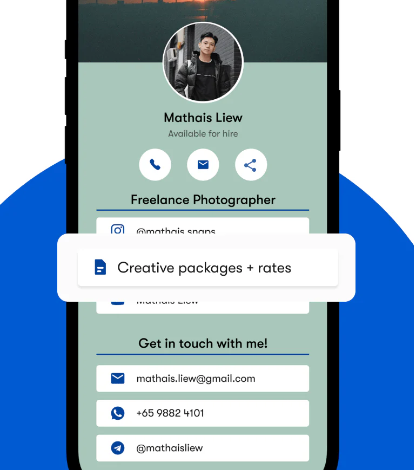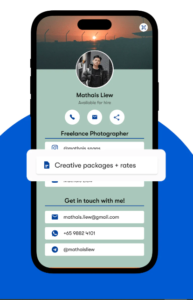
In a world where networking is key to success, a business card remains one of the most effective tools for leaving a lasting impression. Despite the rise of digital communication and online platforms, the traditional business card continues to serve as a tactile and memorable introduction to your professional identity. But how do you create a business card that stands out in a sea of generic designs? The perfect business card isn’t just a piece of paper with your contact information—it’s an extension of your brand, personality, and the first step in building a meaningful connection.
The Purpose of a Business Card
At its core, a business card is a simple tool meant to convey essential information about you and your business. But its function goes beyond just sharing a phone number or email address. A business card is often the first point of contact in a professional relationship. Whether you hand it over at a networking event, leave it with a potential client, or exchange it after an interview, your business card says a lot about you. It’s your introduction, your elevator pitch in a tangible form.
Your business card should be memorable, functional, and aligned with your personal or company branding. In a crowded marketplace, your card needs to cut through the noise and ensure that it makes a positive impression long after it’s been handed out.

Key Elements of a Good Business Card
To design a business card that resonates, certain key elements must be considered. A good business card should combine both functionality and creativity while reflecting your professional identity.
1. Clear and Concise Information
While design is important, the primary function of a business card is to provide the recipient with relevant contact information. This should include:
- Your Name: Your full name (or the name you use professionally) should be the most prominent detail on the card.
- Job Title and Company Name: This helps recipients understand your role and the organization you represent.
- Contact Information: Include your phone number (business line or mobile), email address, and physical address if necessary. You may also want to add links to your website or LinkedIn profile.
- Social Media: In today’s digital world, including professional social media handles, such as LinkedIn, Twitter, or Instagram, is becoming increasingly important for those who want to make a full digital connection. However, only include platforms that are relevant to your industry and professional persona.
By keeping the information straightforward and easy to read, you make it simple for the recipient to follow up with you later.
2. Design and Layout
The design of your business card should reflect your personal style or company branding while ensuring clarity and professionalism. Key design considerations include:
- Typography: Choose fonts that are easy to read. Avoid using too many fonts on one card as this can make it appear cluttered and unprofessional. A combination of a serif and sans-serif font is often a good choice to create a sense of hierarchy and readability.
- Color: Colors are a vital part of your branding and should reflect the tone of your business. A law firm might choose a more muted palette with dark blues or blacks, while a creative agency might opt for brighter, bolder colors. Ensure the color scheme is consistent with your other branding materials, such as your website or logo.
- White Space: Don’t overcrowd your business card with information or design elements. Adequate white space helps the card breathe and makes the important details stand out. A well-balanced layout is key to a good design.
3. Branding and Personal Touch
A business card is often the first physical touchpoint someone has with your brand, so it should immediately reflect who you are and what your business stands for. Consistency across all your branding materials—from your website to your business card—is crucial.
- Logo: Your logo should be the focal point of your card, typically positioned in the top left corner or at the center of the card. It visually ties the card to your brand identity.
- Tagline or Slogan: If your business has a catchy slogan or tagline, including it on your card can help reinforce your message. But be careful not to overcrowd the space—sometimes less is more.
- Unique Elements: Personalize your card with a touch of creativity. For example, you might choose a unique paper stock, embossed lettering, or an interesting shape. These small touches can make your card stand out and leave a more lasting impression.
4. Quality Materials and Printing
The tactile experience of holding a business card can also impact how your brand is perceived. Opt for quality paper stock that feels substantial in the hand. A flimsy card may convey that your business lacks substance, while a thicker, well-printed card communicates professionalism and quality.
There are also options like matte, gloss, or textured finishes, which can add an extra layer of sophistication to your card. Matte finishes are often seen as more modern, while gloss finishes can make colors pop. Textured cards, such as those with a linen finish or raised print, provide a sense of luxury and uniqueness.
The quality of printing is equally important. Ensure your business card is printed clearly, with no blurring or fading of text or logos. A high-quality print job will reflect your attention to detail and commitment to professionalism.
5. Versatility and Adaptability
A good business card should be versatile enough to work in various settings. Whether you’re attending a formal business conference, a creative networking event, or an informal meetup, your card should be able to make an impression in any context.
You should also think about how your card can adapt to new ways of communication. For example, QR codes are becoming more common on business cards, allowing recipients to scan and instantly visit your website, portfolio, or LinkedIn profile. This is a great way to bridge the gap between the physical and digital worlds.
The Dos and Don’ts of Business Cards
- Do keep the design simple and avoid overloading the card with information.
- Do choose a high-quality material that feels substantial.
- Do ensure your contact information is clear, easy to read, and up-to-date.
- Don’t use too many fonts or colors that clash.
- Don’t include personal information that isn’t relevant to your professional life (e.g., personal phone numbers unless necessary).
- Don’t use a card that feels flimsy or poorly printed—it reflects badly on your business.
Conclusion: The Business Card as a Marketing Tool
A well-designed business card is not just a way to share your contact information; it’s an essential marketing tool. When designed thoughtfully, a business card reflects your brand identity and acts as a tangible representation of your professionalism. It provides the recipient with a direct and lasting impression of who you are, what you stand for, and why they should connect with you.
By taking the time to craft a business card that blends aesthetic appeal with functional design, you’re investing in a tool that could open doors to new opportunities and professional relationships. It’s more than just a card—it’s your chance to make a memorable first impression that lasts long after the handshake.


